11.11.2005
TWELFTH, NON-JUBILEE CHIGORIN MEMORIAL
From 15th till 23rd of October the twelfth memorial of the great Russian chess player Mikhail Ivanovich Chigorin took place in the "Puck" (a widely-used nickname of the puck-shaped hotel "Saint Petersburg" – ed.). It was held like an ordinary Russian open that differed from its younger brothers only by larger prize fund and absolute equalization of experienced professionals and ordinary fans of ancient game: grandmasters were only admitted without paying the entrance fees, and accommodation or meals were out of question. The author is not going to discuss whether it is good or bad. The result is on the scoreboard. It is not even an objective reality, but history that does not admit any other mood but for indicative and imperative. So let us proceed to the tournament itself. Some people may suppose that the author is mollycoddle, prim young lady, and not chess professional, but he really suffered from cold, especially during the first days of the tournament. They say someone suffered from poor lights in the beginning. During all the days the participants were devoid of a chance to support headily dwindling strength of their organisms with anything eatable. Instant coffee for 60 (!) rubles does not count. Coming back to my sufferings I should note that they were so great that somewhere in time pressure, after about 3 and a half hours of the struggle, when the organism began to die, the lower jaw simply aimed at greeting its elder sister sonorously. Maybe it was professional activity that wore out the not very strong nerves of yours faithfully. Maybe the opponents provoked such fear in me. Anyway, one had to play in uncomfortable conditions. I will go on to the results of the tournament after a traditional preamble. Roman Ovetchkin and Igor Zakharevich shared the victory in the competition with the result of 7 points out of 9. Their ways to the victory were different and even opposite. Roman, having got 3 points out of 3 in the beginning of the tournament, acted successfully then and was in the sole lead with no losses before the last round with 6.5 points out of 8, drawing his last game. Igor Zakharevich in his turn had a solid fifty percent after the first four rounds, but he had an excellent finish, 5 out of 5! In the last round he managed to impose his complex and original play on Maxim Sorokin and jumped into the first place. The author has no right not to present the winners with the examples of their work. So what is the use to hesitate? E.Romanov-R.Ovetchkin B12 1.e4 c6 2.d4 d5 3.e5 Ґf5 4.¤d2 e6 5.¤b3. After the legendary win of Vladimir Borisovich a knight on b3 became one of the methods to fight against the Caro-Kann. 5...¤d7 6.¤f3 h6. In the recent semi-final of the Russian championship Alexander Lastin preferred 6...Ґg6 7.Ґe2 ¤h6 8.0–0 Ґe7 9.Ґxh6 gxh6 10.Јd2 h5 11.c3 Јc7 12.¤c1 0–0–0 13.¤d3 ¦dg8 14.¤f4 h4 15.Јe3 ўb8 16.a4 Јd8 17.a5 a6 18.c4 Ґe4 19.cxd5 exd5 20.¦fc1ѓ Rublevsky-Lastin, Kazan 2005. 7.Ґe2 ¤e7 8.c3 Ґh7. The author cannot understand the meaning of this move. 9.Ґd2?! I would rather prefer something like 9.0–0 Јc7 10.a4!? 9...Јc7 10.0–0 ¤g6 11.¤e1 Ґe7 12.g3. One more original move. It seems that White protects the h4-square. But what for? 12.f4!? deserved attention. 12...0–0. One could begin playing actively even before castling 12...c5!? 13.Ґe3 f6. 13.f4 c5„ I think nobody will argue that in the opening Black has got counterchances at least. 14.Ґe3 f6. One had to close the center immediately: 14...c4! 15.¤d2 f6›. 15.¤g2?! It was the only chance for White to get some edge by relieving the tension – 15.exf6 ¦xf6 16.dxc5 ¤xc5 17.Ґd4І. 15...c4 16.¤d2 b5. Black calmly develops the queenside initiative. It is unclear what White can oppose to it. 17.g4 fxe5 18.fxe5 b4. After 18...a5 White could induce some activity by 19.g5. 19.cxb4 Јb6. An interesting decision. Black does not hurry to win the pawn back, but wants to take it under the most favorable circumstances. 20.b5?! The pawn goes to the lion's jaws. 20.Јa4!? ¦fd8 21.¤f3›. 20...a6! 21.¤f3 axb5і The pawn structure has changed to the obvious benefit of Black. White created nothing on the opposite flank. Black gets the advantage. 22.h4 ¦f7. Roman does not like the very idea of putting his king on h8. 23.h5 ¤gf8 24.b3. It is the beginning of the very doubtful idea. What does White want? He had to start preparing the play on his own flank – 24.Јd2. 24...Ґe4! 25.a4? And it is certainly a mistake. Evgeny commits suicide. 25...cxb3µ 26.Ґxb5? It looks like an ordinary blunder. Anyway, after very strong 26.axb5 ¦xa1 27.Јxa1 Ґxf3 28.¦xf3 ¦xf3 29.Ґxf3 Јxb5µ the situation does not improve. 26...¦xf3 27.¦xf3 Ґxf3 28.Јxf3 28...Јxb5!°. This rather simple blow virtually decided the fate of the first place. 29.¦f1 An original approach. Black wants to give his queen for the rook – 29.axb5 ¦xa1+ 30.ўh2 b2°. 29...Јd3!? 30.Јf7+ ўh8 31.Јxe7 Јxf1+! It cannot be called finesse; it is just a logical conclusion of the idea. 32.ўxf1 b2 33.Јb4 ¦b8 0–1 1.d4 d5 2.¤f3 ¤f6 3.c4 c6 4.¤c3 e6 5.Ґg5 dxc4 6.e4 b5 7.e5 h6 8.Ґh4 g5 9.¤xg5 hxg5 10.Ґxg5 ¤bd7 11.g3 Ґb7 12.Ґg2 Јc7 13.exf6 c5 14.0–0!? It is an interesting deviation from the main theory. The main frame of the modern opening discussion opens after 14.d5. 14...Ґxg2 15.ўxg2 Јb7+. It seems that Black has to examine the following game closely, because it is hard for him to find an improvement in the subsequent play: 15...0–0–0!? 16.dxc5 Јc6+ 17.f3 ¤xc5 18.Јe2 Ґh6„ Riazantsev-S.Ivanov, Sochi 2004. 16.f3 0–0–0 17.dxc5 ¤xc5 18.Јe2 ¤d3 19.¤e4 Јc6 20.b3!?N A novelty. White loses a tempo in comparison with Hansen-Dominguez game, but maybe he does not really need the rook on d1 that much? 20.¦fd1 Ґc5 21.b3 Ґa3 22.bxc4 bxc4 23.¦ab1 ¦d5 24.h4 ¦hd8 25.¦d2 ¤b4 26.Јf2 ¦8d7 27.h5 c3› K.Hansen-Dominguez, Esbierg 2002. 20...Ґa3 21.bxc4 bxc4 22.¦ab1 ¦d5 23.Ґe3. The first substantial difference from the aforementioned game. White is going to play against the black king and not to push the h-pawn. 23...¦g8. Dominguez's move 23...¦hd8 in this situation meets a rude 24.Ґxa7. 24.Јc2. It was possible to prevent Black's idea by 24.¤f2!? 24...¦g4!? An absolutely grand move, but pointless in its beauty! One could drive the queen back by 24...¤b4!?, but who would prefer such a prose to ¦g4? 25.Јc3. I could find nothing destructive after 25.fxg4!: 25...¦d4! 26.Јc3 Ґb2 27.¦xb2 ¦xe4 (27...Јxe4+ 28.¦f3ќ) 28.Јa3 ¦xe3+ (28...¦f4+ 29.ўh3!) 29.ўg1ќ. 25...Ґd6. Black is going to retreat. The surrender comes. 25...¦xe4 26.fxe4 ¦f5 27.¦xf5 exf5 28.Ґxa7ќ. 26.¤xd6+ ¦xd6 27.Јa3ќ. That is all. Black's position is hopeless. And the course of the struggle was defined already in the opening. Perfect! 27...c3 28.Јxa7 ¤b2 29.Јxf7 ¦d8 30.Јe7! White cynically forces the exchange of queens, and the f-pawn promotes. 30...¦e8 31.Јc5 ¦c4 32.Јxc6+ ¦xc6 33.Ґh6 ¦c7 34.¦fc1 1–0 I told almost everything about the sporting side of the tournament (there still has to be some intrigue, otherwise no one will read the article!). Now it is time for the creative review. Well, enough grumbling for now. I will anticipate creative results with my own games. I played in the vapid professional style, only beating the players with lower rating, and not all of them. In two games as Black I had suspicious positions, but I am proud of them if we consider creativity. R.Ovetchkin-N.Vitiugov D50 1.d4 d5 2.c4 e6 3.¤c3. Somewhere there I understood there was a chance of getting into Roman's opening ideas. And I decided to turn off the road. I turned off. By some miracle I manage to survive. 3...¤f6 4.Ґg5 c5?! After that I expected long thought from the opponent. It turned out that Roman anticipated this move as well... 5.cxd5 cxd4 6.Јxd4 Ґe7 7.e4 ¤c6 8.Јd2 exd5 9.Ґxf6 Ґxf6 10.exd5 ¤e5? Having played a semi-correct opening, Black has to act very carefully further. One more inaccuracy will put him in the very difficult position. 10...Јe7+!? 11.¤ge2 ¤e5 12.d6 Јd8 13.¤g3 0–0 14.Ґe2 Ґg4 15.f4 Ґxe2 16.fxe5 Ґg4 17.exf6 ¦e8+ 18.¤ge4 Јxf6 19.Јf2ќ Korchnoi-Hector, Val Maubuee 1990. 11.Ґb5+ ўf8?! Black still wants to start complicated struggle, and leaves the bishops on board. 11...Ґd7!? 12.Ґxd7+ Јxd7 13.¤ge2 ¤c4 14.Јc2 0–0 15.0–0 ¦ac8І. 12.¤ge2± "I knew it would to hurt, but I didn't know it would happen so soon". There is no development, no pawn, no objects to attack (in the opponent's camp that is). On the other hand, for many black pieces the starting positions are the best one. It is also true for the h8-rook. 12...h5! 13.¦d1? It was played according to somewhat general considerations. One had to play tougher – 13.f4 Ґh4+ 14.¤g3 ¤g6 15.Јe3!?± (15.0–0–0?! a6 16.Ґa4 (16.Ґd3 ¤xf4!„) 16...Ґg4©). 13...h4 14.f4 ¤g6 15.d6 Ґe6. Anyway, there is no other square. (15...Ґg4?! 16.h3 Ґxe2 17.Ґxe2±). 16.Јe3. After 16.Јc2 the already mentioned h8-rook enters the game at the most appropriate moment – 16...¦h5! 16...h3 17.g3 a6. Forcing White to choose the location of the bishop. 18.Ґa4. A control over the e8-square is very important in this position, and White struggles for it till the end. (18.Ґd3 Ґg4©). 18...Ґg4„ The rook pawn's raid has improved Black's position of course. The bishop will almost permanently be an eyesore to White, standing on g4, there are problems on the h1-a8 diagonal, and one can play on the e-file when appropriate. 19.¦d2 b5 20.Ґb3 Јd7. Black is just one move short from reaching absolute happiness. 21.¤e4! On the threshold of the time trouble White starts reasonable exchange operation. 21...¦e8 22.¤xf6 gxf6 23.Јb6 ўg7 24.Јc7 Јxc7. One cannot avoid the exchange – 24...Јf5? 25.Ґxf7 ¦c8 26.Јb7ќ. 25.dxc7 ¦e3!? The endgame that arose is not that easy for Black. His overextended queenside pawns can tell. Firstly one has to exchange a couple of rooks. (25...¦e7 26.ўf2 ¦he8 27.¤d4 ¦xc7 28.a3!І). 26.¦f1 ¦c8 27.ўf2 ¦f3+ 28.ўg1 ¦xf1+ 29.ўxf1 ¦xc7 30.ўf2 ¤e7 31.Ґd1. This idea turned out to be defective. It seems that White had to concentrate his attention on the play against a- and b-pawns, having fixed them first by 31.a3!І. 31...ўg6 32.¤d4?! continues the idea of exchanging the light squared bishops. 32...Ґxd1. It seems to be disadvantageous for Black to maintain the tension – 32...ўh5?! 33.Ґb3. 33.¦xd1 ¤f5 34.¤b3 ¤h6 All of a sudden Black's knight becomes more dangerous than his vis-à-vis. White cannot allow the invasion on g4. Black's chances are slightly more preferable now. 35.g4! ¤xg4+ 36.ўg3 ¤e3. 36...f5?! 37.¦d6+ f6 38.¦xa6 ¦c2 39.ўxh3 ¦xh2+ 40.ўg3 ¦xb2= is too dry. 37.¦e1 ¤c4?! It seems that Black loses his illusive chances for the victory by making this logical move. 37...¤f5+ 38.ўxh3 ¦c2 39.¦g1+ ўh5 40.¦g2=; The author could not resolve to play non-solid 37...¤g2!? in the time pressure. Who talks about resolving anyway – I even did not consider it at all. 38.¦c1 ¦d7 39.¦c6 ўf5 40.ўxh3 ¤xf4+ 41.ўg3 ¦d3+ 42.ўf2 ўg4ѓ. 38.¦e2 ¦d7 39.ўxh3. 39.¤c5!? ¦d5 40.¤xa6 ¦d3+ 41.ўh4 ¤d6 42.¤c5 ¤f5+= is slightly more precise. 39...ўf5 (39...¦d3+ 40.ўh4 ўf5 41.¤c5 ¦f3 42.¤xa6=) 40.¤c5 ¦d5 41.¤xa6 ¦d3+ 42.ўg2. And here, in the end of the time trouble, having clear understanding that the game would not be decisive, the opponents agreed to a draw. Ѕ–Ѕ And there were also nice moments in the game with Sergey Sivokho. N.Vitiugov-S.Sivokho E10 I was late for this game for about 35 minutes. My opponent Sergey Sivokho is well-known for good theoretical knowledge. But this knowledge concerns mainly the schemes he likes most, for example the Volga Gambit. 1.d4 ¤f6 2.¤f3. A hard measure against the Volga region inhabitants: with not much time left it would be a bit tough to meet Sergey's home preparation. 2...e6 3.c4 c5 4.d5 b5. The Blumenfeld Gambit is also a gambit of course, and the pawn stands on b5 too, but the play is very different. 5.Ґg5 h6 6.Ґxf6 Јxf6 7.¤c3 b4 8.¤b5 ўd8. The idea used in the game was taken by the author from the following example: 8...¤a6 9.e4 g5 10.e5 Јf4 11.Ґd3 g4 12.Јd2 Јxd2+ 13.¤xd2 Ґg7 14.f4 gxf3 15.¤xf3 0–0 16.0–0–0 ¦b8 17.Ґe4 Ґb7 18.¦he1 exd5 19.Ґxd5 ўh7 20.Ґe4+ Ґxe4 21.¦xe4 ¦b7 22.¤d6 ¦b6 23.¦f4 ¤b8 24.¦xf7± Najer-Malakhov, Moscow 2003. 9.e4 g5 10.e5!? Јf4 11.Ґd3 (11.h3! is also interesting) 11...g4 12.Јd2 Јxd2+ 13.¤xd2 13...Ґb7? Black makes a blunder with his first original move in the game. However horrible it may seem, one should have resolved to 13...a6!? 14.¤d6 Ґxd6 15.exd6, and move the pawn a bit forward: 15...a5 (worse is 15...exd5?! 16.cxd5 ¦e8+ 17.ўd1 Ґb7 18.Ґc4 ¦e5 19.h3І) 16.¦c1!? ¦a6 17.¤e4 f5 18.¤xc5 ¦xd6І. 14.¤e4. It is the beginning of the forced variation, leading to the obvious advantage of White. 14...exd5 15.¤ed6 Ґxd6 16.¤xd6 ўc7 17.¤xb7 ўxb7 18.cxd5 ¦e8 19.0–0–0 ¦xe5 20.¦de1!± Black's extra pawn should not be misleading. His position is very difficult, and it is not clear how he should develop the queenside. White is going to exchange the Black's only developed piece and set about his kingside. 20...d6?! Another disputable decision. Black has a bad position after 20...f6 21.¦xe5 fxe5 22.h3 g3 23.fxg3 ¤a6 24.¦f1±; evading the exchange by 20...¦h5!? 21.¦e7 ўc7 22.¦xf7 a5 23.¦g7І seems to be the most stubborn solution to the author. Black also has poor chances after the immediate rooks exchange – 20...¦xe1+ 21.¦xe1 ўc7 22.¦e8ќ. 21.¦xe5 dxe5. This is why White put the d-rook on e1. 22.h3 gxh3 (22...g3!?) 23.¦xh3 ¤d7 24.¦xh6 c4! This is the only chance. 25.Ґxc4?. The wish to make material advantage out of positional one as quickly as possible kills White. Continuing the play "for activity" – 25.Ґf5! ¤b6 (25...¤c5 26.¦f6 (26.¦h4? b3 27.a3 ¦d8„) 26...¦d8 27.¦xf7+ ўb6 28.¦f6+ ўb5 29.d6±) 26.d6 ¦f8 27.¦f6± – White had to win. 25...¦c8 26.¦c6 ¤b6 27.b3 A critical position. Black has to make a move, and, moreover, it has to be the f-pawn move (to take it out of bishop's attack after the rooks exchanged). 27...f6! I considered only 27...f5?! 28.ўd2 ¦xc6 29.dxc6+ ўxc6 30.Ґe6 f4 31.ўd3±. I cannot say for sure that the endgame is won for White, but his chances are cetainly great. 28.¦xf6 ¤xc4 29.bxc4 ¦xc4+ 30.ўb2 ¦d4? Having been at the crossroads for the first time in the game, Black blunders. 30...a5! gave Black great chances for a draw. The best White's try is apparently 31.¦f5 (here active king does not give White more than perpetual check: 31.ўb3!? ¦c3+ 32.ўa4 ¦a3+ 33.ўb5 ¦xa2 34.g4 b3 35.g5 ¦a1! (35...b2? 36.¦b6+ ўc7 37.ўc5±) 36.¦b6+ ўa7 37.¦a6+ ўb7 38.¦b6+=) 31...¦d4 32.¦xe5 (32.ўb3?! ¦xd5 33.ўa4 ўc6 34.¦f6+ ўc5 35.ўxa5 ¦d2!) 32...¦d2+ 33.ўb3 ¦xf2 34.g4І, but it is quite different from the text. 31.ўb3! In the recent European junior championship I failed to win an absolutely won rook ending. Analysing that game, I realized finally several things common for such endgames. The d-pawn goes nowhere. It is an eyesore. White's strength is the g-pawn. White's king is rather passive also, so it should be activated. These considerations made me choose the subsequent maneuver. 31...a5 32.ўa4 ¦xd5 33.g4ќ A complete domination. All White's pieces and pawns work with maximum coefficient of efficiency. 33...e4 (33...ўc7 34.g5 ¦d2 35.ўxa5 ¦xa2+ 36.ўxb4 ўd7 37.ўc4!ќ) 34.¦f5 ¦d2 35.ўxa5 ¦xa2+ 36.ўxb4 ўc6 37.ўc3! It is important though simple finesse. 37...¦a4 38.g5 ўd6 39.g6 e3 40.fxe3 ¦g4 41.¦a5 ўe6 42.ўd3 ўf6 43.¦a6+ ўf5. Black's only chance is activity. (43...ўg7 44.e4ќ). 44.ўe2! I think there are also other winning plans in the position. White wants to approach Black's rook with the king and make it go away from the g-file. 44...¦g3. 44...¦xg6 45.¦xg6 ўxg6 is followed by the king's crafty return 46.ўd3!ќ. 45.¦b6 ўe4 46.ўf2 ¦g5 47.¦a6. White gives Black a chance to speak once more. 47...ўf5 48.ўf3 (48.¦a5+?? ўxg6 49.¦xg5+ ўxg5=) 48...¦g1 49.¦b6. For the third time White guilefully stands still, and Black does not sustain. 49...ўe5 50.e4 ¦a1 51.ўg4 1–0 The last non-creative fragment presents the bronze winner, Petersburg grandmaster Valerij Popov. The intrigue is over. But maybe it is for the better. V.Popov-Y. Tihonov Black's position is of course worse. Light-squared bishop defines a lot of things in the King's Indian, and here White was not even forced to put the pawn on f3. But why should one blunder the pawn in one move (someone would say it was a sacrifice... I will not comment on this)? 18...ўh8? (18...b6!? 19.b4 axb4 20.axb4 ¤f6 21.¦a1±) 19.Ґxa5ќ b6 20.Ґd2. What did Black want? 20...¤f6 21.b4 g5 22.g4!? The professional attitude to problem solving: White nips possible Black's activity on the kingside in the bud, having calculated the variations carefully. 22...fxg3 23.fxg3 g4?! I put the mark for the objective strength of the move. But one must play such a move anyway. What if something wrong appears to the opponent? 24.hxg4 hxg4 25.Ґxg4! It did not... 25...Јg6 26.Ґf5 Јxg3+ 27.ўh1. White's position is dangerous only from the first sight. And in practice a single black queen is not dangerous at all, and black king's position is very disturbing. In search for practical chances Black begins to drop material, but it does not save at all. 27...Јh4+ 28.ўg2 ¤h5 29.¦h1 Јg3+ 30.ўf1 Јd3+ 31.ўf2 ¦xf5+ 32.exf5 Јg3+ 33.ўe2 e4 34.¦xh5+ ўg8 35.Ґc3 ¤xb4 36.Јg1 Јf3+ 37.ўd2 Јxh5 38.f6 Јf7 39.Јxg7+ Јxg7 40.fxg7 ¤d3 41.Ґd4 1–0. You should not think that Yury Tihonov who played Black (by the way, Belarus vice-champion 2005) is a weak player. But I cannot find the explanation for Black's mysterious 18th move. Usually such tournaments are not rich in theoretical ideas. However, Sergey Solovyov's original approach to the Sveshnikov problem rises above the usual routine process. S.Solovyov-S.Yudin B33 1.e4 c5 2.¤f3 e6 3.d4 cxd4 4.¤xd4 ¤f6 5.¤c3 ¤c6 6.¤db5 d6 7.Ґf4 e5 8.Ґg5 a6 9.¤a3 b5 10.Ґxf6 gxf6 11.¤d5 f5 12.Ґxb5 It is the most original and concrete attitude to the Sveshnikov variation. But as practice shows, it is not the best one. 12...axb5 13.¤xb5 ¦a4 14.b4 ¦xb4 15.¤bc7+ ўd7 16.0–0 ¦g8. In another Sergey's game there was 16...¦xe4 17.Јh5 ¤d4 18.Јxf7+ Ґe7 19.¤e8 Јxe8 20.¤f6+ ўd8 21.¤xe8 Ґe6 22.¤xd6!ќ Solovyov-Eliseev, St. Petersburg 2005. 17.¤xb4 ¤xb4 18.¤d5 Јg5 19.g3 ¤xd5 20.Јxd5 ўe7N. Here, on the 20th move Black turned off the formed path. The move looks very natural, therefore it is hardly good or bad. 20...fxe4 21.¦ab1 Ґe7 22.c4 f5 23.c5 e3 24.c6+ ўd8 25.¦b8‚ Teschke-Valet, Germany 2000. 21.a4› How can one assess this position? White had a simple play, connected with combination of threats to the king and advancing the passed pawn. It is difficult to handle this position for Black, but I can hardly believe that he stands worse. One has to combine the play against the scary pawn and play in the centre (it is hardly possible to make something against the king). 21...Јg4! A strong move. Black presses on e4. 22.a5 Ґa6. Of course, the bishop has to block the way for the passed pawn. Primitive 22...Јxe4?! 23.Јxe4 fxe4 24.a6 Ґh6 25.¦fb1 Ґd7 26.a7 ¦a8 27.¦b8 Ґc6 28.ўf1!± (28.¦a6 e3! 29.ўf1±) does not work. 23.¦fb1 ўf6. Black has prepared to activate his light-squared fellow, but he was not fated to achieve that. 24.c4. It is an obligatory move. 24.¦b6?! Ґe2„ . 24...Јe2?! Black could not resolve to play 24...Јxe4!? 25.Јxe4 fxe4 26.c5!?› (26.¦b6 Ґxc4 27.a6 Ґe7і). It seems that having lost this possibility, he also loses dynamic balance. 25.c5?! White returns the courtesy. The marks to the moves are very subjective here. It is a non-standard struggle, material equivalence is extremely distorted, the price of each move is very high, and so it is hard to assess the position. Author observes 25.Јc6!? Јxc4 26.Јxc4 Ґxc4 27.a6 Ґd3 28.a7 Ґxe4 29.¦b8 as a stronger choice, and the 8th rank pin will hardly bring many positive emotions to Black. 25...Ґc4 26.Јc6. And here it was of no use to pin – 26.Јa8 fxe4 27.¦e1 Јg4 28.¦xe4 Јf3„, and there are at least mutual chances. 26...Ґd3 27.¦e1 It becomes hotter as culmination approaches. Opponents maintain the tension decently. By the way, 27.¦b3!? Ґxe4 28.Јb6 is interesting. 27...Јf3. 27...Ґxe4!? 28.¦xe2 Ґxc6 29.¦b2 practically led to the transposition of moves. 28.¦e3 28...Ґxe4 29.¦xf3 Ґxc6 30.¦b3. It is an important moment in the game. Black has to stop white pawns using all the pieces on board including the king. 30...Ґg7. One must not allow the pin: 30...ўe6?! 31.¦b8. 31.¦b6 Ґe4 32.a6 It seems that White is close to a victory, but it only seems so. As a matter of fact, he has an advantage, and nothing more. 32...ўg5? This is a losing move! King had to help the pieces in the struggle with passed pawns: 32...¦a8!? 33.¦xd6+ ўe7 34.a7 Ґf8. White attacks, Black holds its ground. The annotator cannot give a more precise assessment. 33.c6ќ. This is the end. Bishop cannot breath any more, the king is far away. The rook cannot restrain the pawns alone. 33...¦c8 34.¦c1 ¦c7 35.a7 ¦xa7 36.c7 1–0 In next two examples St. Petersburg citizen Vassily Orlov played with two young Moscow professionals – Boris Savchenko and Vladimir Dobrov, and although he did not cede a single inch of native land, main creative achievements fell to the lot of his opponents. If it was the author of this article who awarded the prize for beauty at this tournament, then he would have given the first place to the following game. B.Savchenko-V.Orlov 22.¦g5!? White's idea is as simple as truth. Black will have no pieces to move soon. 22...g6 23.¦xh5 gxh5 24.Ґf6. A picturesque position. Even computer observes 24...Ґxf5™ 25.exf5 ¦e1+ 26.¦d1 as the strongest move. One has to put a couple of rooks off the board as soon as possible. 26.ўc2?! ¦a1 27.c4 ¦xa2+ 28.ўd1 ¦xd2+ 29.ўxd2. 26...¦xd1+ 27.ўxd1 ¦b2 28.Ґc2 ¦xa2 29.ўc1 This position has arisen almost forcedly after White's 22nd move. How can one assess it? It is obvious that only White has chances to win if the game goes on in a normal way. But the position is hard, White has to use his pair of bishops extremely accurately in order not to let black rook out of the cage. 29...¦a1+. After that the series of forced moves begins. 30.Ґb1 ¦a5 31.Ґd4 ўe7 32.f6+ ўe6 33.Ґxh7 ¦b5 34.f4. White begins to approach the f7-pawn. This plan allows Black to start his own play, connected with the a-pawn advance. To be fair I will note that Black should have preferred a restrictive play to an active plan. Another plan for White in this position consisted in gradual "hilling" the h-pawn. 34.Ґc2!? ¦b8 (34...¦a5!? 35.ўb2 ¦b5+ 36.ўa3 ¦b8) 35.h4 ¦g8 36.Ґd1. 34...a5?! (34...¦b8!?). Starting the move-by-move play that brought Black to an overwhelming position, although it had to lead to... But let us observe it step by step. 35.Ґg8 a4 36.f5+ ўxf5 37.Ґxf7 a3 38.Ґe8?? A black-out. What reasons made Boris reject the natural 38.c4! ? 38...¦b8 39.cxd5 ўe4 40.Ґa1 cxd5 41.Ґxh5 d4 42.f7±. The assessment of the arisen position is rather subjective. But it is surely а) not easy for Black b) better than the one in the game. 38...a2 On the sly Black's pawn almost queened. Alarm! 39.c4 ¦b1+ 40.ўc2 ўe4! It is possible that White missed this intermediate move. 41.Ґb2 a1Ј 42.Ґxa1 ¦xa1 43.Ґxc6 ¦a2+? The main action took place after the time trouble. And why did Black pass by an easy victory after 43...ўd4!°? 44.ўc3= ¦xh2 45.cxd5 ўe5 46.Ґb7, and all of a sudden Black has to give away his rook for the c-pawn. 46...¦f2 Ѕ–Ѕ V.Orlov-V.Dobrov There is a flight of fancy on board. Black bishops are slightly restrained by white pawns, White's far advanced passed pawn is not dangerous at all, Black's pawn structure is relatively solid, and Black's knight on c4 cements the position. It seems that the position can be opened by White only. And Black provokes him to do it. 23...Јc7!? (23...Јd8) 24.f5!? exf5 25.¤xd5 ¦xd5 26.Јxc4. Of course, Black's knight is far more dangerous than the rook in this position. I think the alternative 26.Ґxd5?! ¤e3 27.g5 (27.Ґf3 fxg4?! 28.hxg4 ¤xg4‚) 27...fxg5 28.Ґh1› was practically not considered by White. 26...¦dd8 27.d5 fxg4 28.Јxg4. The changes in the position are obvious. The couple of white passed pawns are not promoting anywhere. Black's bishops are ready to break out. But it is not easy to assess the position. 28...Јe5 29.Јg3 ¦xd5 This is a move that offers itself on one hand, but on the other hand it is not the strongest one objectively. Frankly, no one would prefer prosaic 29...Ґe3+!? 30.ўh1 ¦xd5 31.Ґxd5 Јxd5+ 32.ўh2 Јxa2 33.Јxe3 to the text-move, and White's chances seem preferable to me. 30.Ґxd5 Јxd5 31.¤c3 Јc4. Apparently, not the strongest move again. Does Black play like that to regain the material? 31...Јd4+ 32.ўh1 Ґf4 33.Јf3 Ґd2 34.¦xd2 Јxd2 35.¦g1І. 32.¦ae2 (it seems that 32.¦g2!?І was stronger) 32...Ґf4 33.Јf3 ўh6. A forced extravagance. (33...ўh8? 34.¦e8!). 34.¦g2 Ґd2! 35.Јd5!? Moving... the passed c6-pawn. Maybe it was better to continue playing in the middlegame after 35.¦e3!? Ґxe3+ (35...Јc5? 36.Јf4+ќ) 36.Јxe3+ ўg7›. 35...Јxd5 36.¤xd5 Ґxe1 37.¤e7 ¦e8 38.c7 Ґc3 39.c8Ј. One could continue the struggle by 39.¦g4, but it seems that events took place in mutual time trouble, so let us not judge the opponents severely. 39...Ґd4+ 40.ўh2 Ґe5+ 41.ўg1 Ґd4+ 42.ўh2 Ѕ–Ѕ Before the start of the round 7 arbiter Ivanov declared that a beauty prize has been established (it was stated in the regulations of the previous tournaments) and candidate games could be submitted till the end of the round 8. Maybe something was submitted. Before the end of the tournament there was a rumor that beauty prize is as big as the third prize. I do not know whether it is so or not. Alexei Kornev got the prize. I do not know whether it was given for some specific game or for his overall play. Alexei deserved being awarded. He played active and sharp chess. But apparently the defeat as White vs. Popov in the round 4 influenced him strongly. Kornev was above the opponent and satisfy himself with a draw, but did not want to do it. Without knowing which example attracted the expert jury that much, I suggest two candidates. (Gasanov-Kornev game got the prize – ed.) E.Gasanov-A.Kornev Black has a typical Volga compensation (although it arose from the King's Indian), perspective d3-square and naturally the far advanced h3-pawn. 22.f4? Do not trouble trouble until... One had to prefer 22.a4!?І with the idea to spoil Black's play by putting the knight on b5. 22...¤fg4 23.Ґg1 ¤d3 24.a3. It is what White counted on. The d3-knight has no squares, there is a threat of ¤c4, cutting the navel-string. But it is Black's turn! 24...Ґd4! 25.¤d1. Black attacked, White defended. And now what? (25.¤c4? ¤gf2+ 26.Ґxf2 ¤xf2+ 27.¦xf2 Ґxf2 28.Јxf2 ¦xb3°). 25...Ґxg1. 25...¤xf4!? 26.¤c4 (26.gxf4 Јe2!) 26...¤e5! 27.gxf4 ¤xc4 28.Јd3 ¦b6µ 29.Ґxd4? ¤d2! was also possible. 26.ўxg1 c4! Black's queen joins the attack after the pawn sacrifice. 27.¤xc4 Јa7+ 28.ўh1 Јd4!° Black has a won position. All the pieces take part in the attack, and White's position crumbles away. 29.Јe2 ¦xb3 30.¦xb3 ¦xb3 31.¤d2 ¦b2! It is the last finesse that deals the final blow. 32.¤xb2 ¤df2+ 33.¦xf2 ¤xf2+ 34.ўg1 ¤xe4+ 35.ўf1 ¤xd2+ 36.ўe1 ¤e4 37.ўf1 Јxd5 38.Јd3 ¤d2+! White's position is hopeless for a long time now. The h-pawn will decide the fate of the game. 39.ўe1 Јh1+ 40.ўxd2 Јxh2+ 41.ўc3 Јg2 42.f5 h2 43.fxg6 h1Ј 44.gxf7+ ўf8 0–1 E.Solozhenkin-A.Kornev In the puzzling Benoni Black has hard times as usual. And as usual the situation can be changed only with severe methods. 18...fxe4! Poor-spirited 18...¤f7? loses a pawn –19.exf5±. 19.Ґxe4? One had to take the piece: 19.fxe5! ¤xg3 (19...¦xf1!? 20.Јxf1 Ґxe5 21.¤xe4 Ґf5 is interesting, and here only strict 22.Ґf4! promises advantage to White (22.¤c4?! Ґxe4 23.Ґxe4 Ґxg3+ 24.ўg1 Јh4 25.Ґg2 ¦f8‚) 22...Ґxe4 23.Ґxe4 ¤xf4 24.gxf4 Јf6!? (24...Ґxb2 25.¦a2±) 25.fxe5 Јxe5+ 26.ўg2 Јxe4+ 27.Јf3±) 20.¦xf8+ Јxf8 21.Јe1 Ґxe5 22.¤c4, and here Black has no serious attacking continuation – 22...¤f1+ 23.ўh1 ¤g3+ 24.ўg1 Ґd4+ 25.Ґe3±. 19...¤f7 20.g4? This attack is disastrous for White. One had to reconcile with vagueness of position: 20.Ґg2!?„. 20...¤f6 21.Ґf3 b5!µ. Black makes a pawn sacrifice, "hanging" white knights that way. 22.axb5 axb5 23.¤axb5 ¦e8 24.Јd3 24...c4!°. Another pawn sacrifice decides. White's queen finally gets distracted from the kingside and still cannot leave the knights alone. 25.Јxc4 ¤xg4+. Paving the way for the queen. 26.hxg4 Јh4+ 27.ўg2 Ґxg4 28.Ґxg4 Јxg4+ 29.ўf2. After 29.ўh1 Black could underline unsuccessful position of white queen on c4 by 29...¦e5! 30.¦f2 ¦h5+ 31.¦h2 ¦xh2+ 32.ўxh2 ¤g5°; 29...¦xb5!?°. 29...¤g5 Impetuous action of Black that had started on the 21st move, led to this position almost forcedly. It is absolutely hopeless for White. Just three more moves were played: 30.¤e2 ¦e4 31.Јd3 ¦be8 32.¤g3 ¤h3+ 0–1
Round 8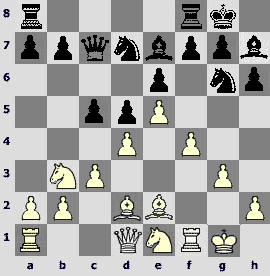
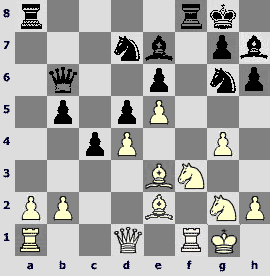
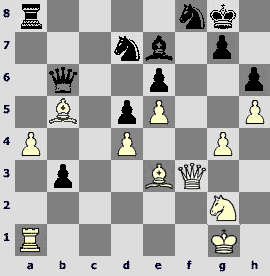
I.Zakharevich-A.Kornev D44
Round 8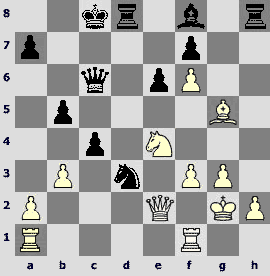
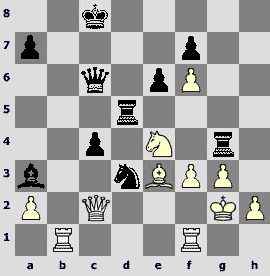
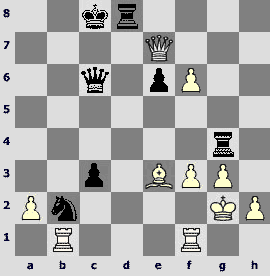
Dear reader, wait a little. Do not urge the author forward as if he were the coachman. As practical keeper of the only inn in a country town, the author will first of all show you the bad moments of the memorial (that is bad rooms), and only then, coming to the only suite (rare examples of real creativity) will make the reader shudder with blissful horror because of the contrast. Too many games ended because of 1-2-move blunders. And those blunders were made not only by ordinary players, but also by holders of respectable ratings. In many games the struggle ended without starting at all. But these deficiencies are typical for all the opens and are usually compensated by rich play on the leaders' tables. I do not want to offend anyone, but there were practically no such games in the tournament. A majority of games ended by the end of the opening (the games were played, of course, but not till the last bullet, as the saying goes). Everything is understandable – a real bird in the hand. And it seems that this very bird is guilty of the fact that 15 chess players have got 6,5 points, and not less than one third of them joined this company after the last round.
Round 5

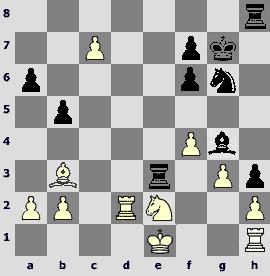
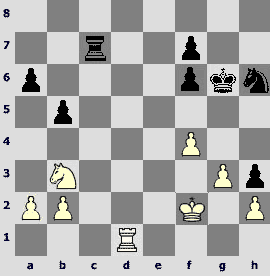
Round 4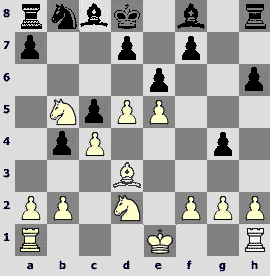
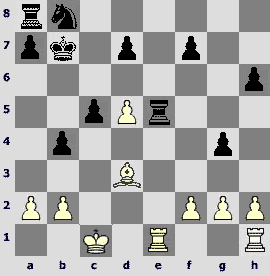

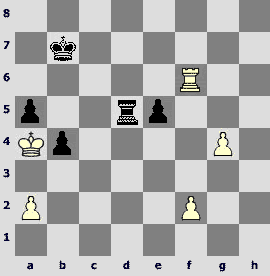
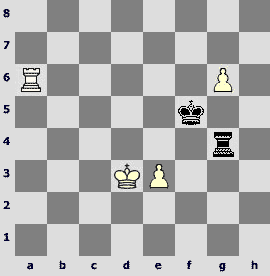
Round 4
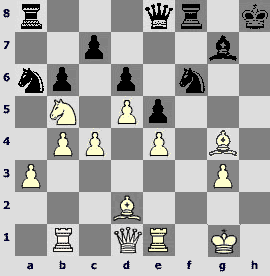
Round 8

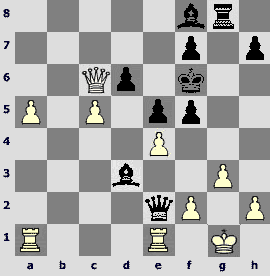
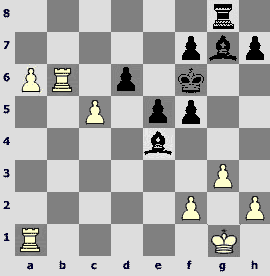
Round 5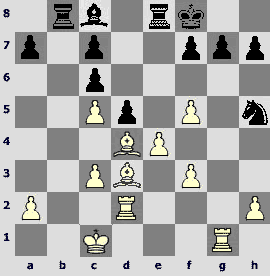
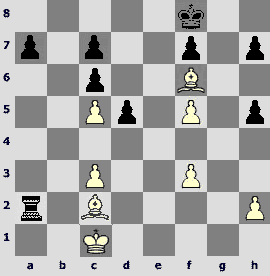
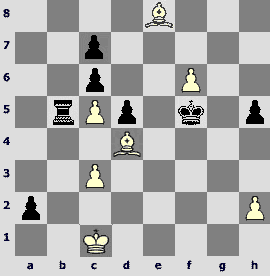
Round 6
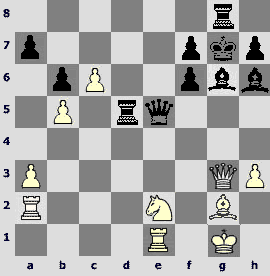
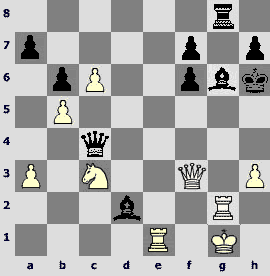
Round 2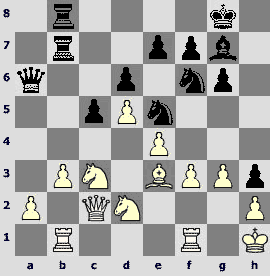
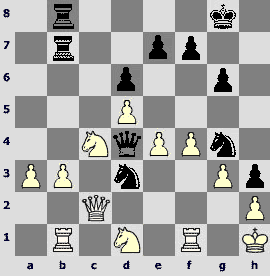
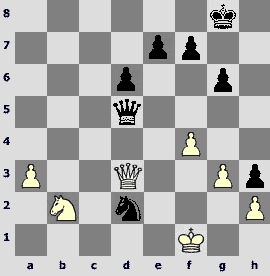
Round 4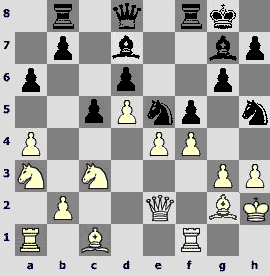
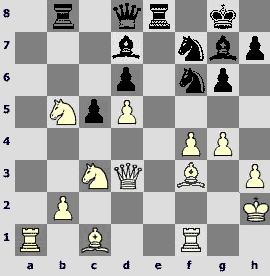
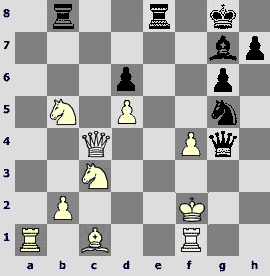
Maybe it is all for the better? Maybe it is just karma of the chess players that do not enter the top hundred? Maybe strange statistics of the last round, cold room, poor accommodation will just help our young talents grow stronger more quickly? Maybe when some of those who became frozen in those dank autumn evenings achieve formidable results in professional sport, we will feel our participation in something truly great and important.
ALL ARTICLES BY AUTHOR
